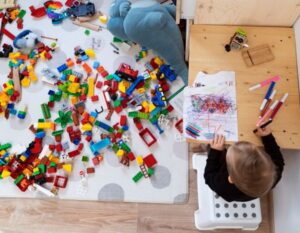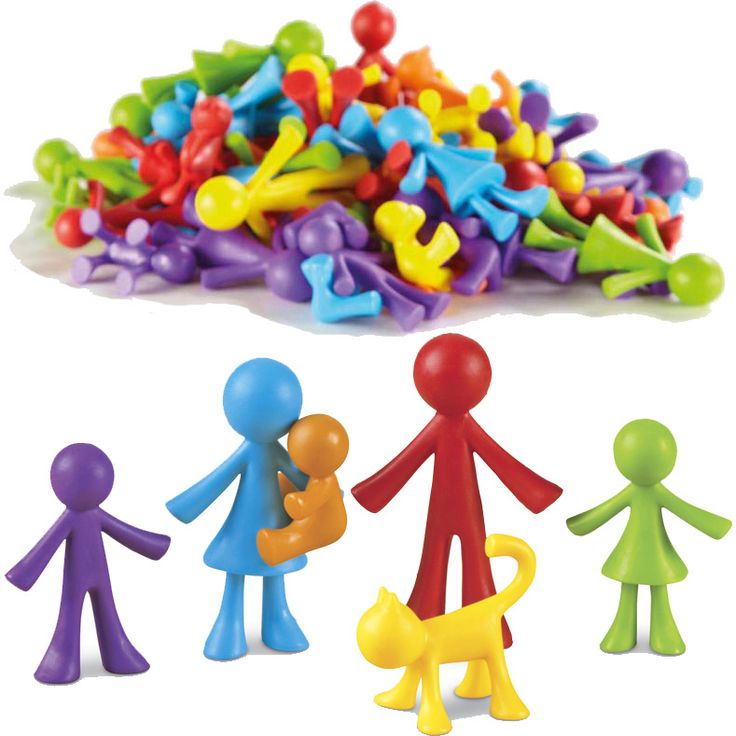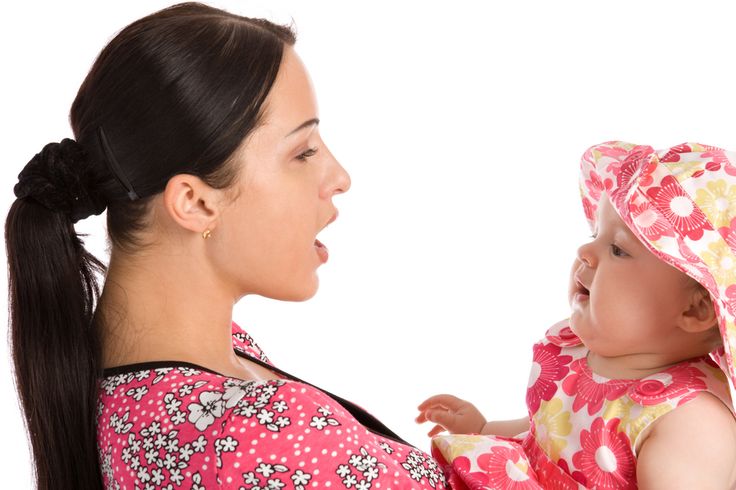
 Post Category - ParentingParenting
Post Category - ParentingParentingPlay Therapy can work wonders for children who can’t quite express themselves with words. Here are some expert tips on how you can support your child at home
Donna Berry, the Directory of Play Therapy Australia and a qualified Social Worker, Play Therapist and Play Therapy Clinical Supervisor, recently visited Singapore from her home in Perth, Australia to conduct a seminar for local childcare and therapy professionals. One of the leading experts in this part of the world on the benefits of child-led play, Donna sat down with Sassy Mama to tell us more about Play Therapy, as well as strategies every parent can use in the home to improve communication with their child. Research increasingly indicates that play is seriously important for children’s development and well-being, and Donna provides some fabulous suggestions about how to help kids play. With her thoughts on everything from technology for kids (what she says might surprise you!) to finding the root causes of bedwetting, Donna makes for a fascinating interview, mamas!

What is Play Therapy, and whom can it help?
Play Therapy is all about developing a safe place for children and a relationship of trust. It can be employed from age 2 or 2.5 onwards. What’s great is that the children don’t have to have language for it to be effective. They don’t need to talk about their experiences, they can play them out. We have specific toys, categorized into “nurturing” “aggressive” and “creative” (more on these toys below), that can draw on certain emotions and behaviours.
A child doesn’t have to be traumatised to benefit from Play Therapy; it can really help a parent to understand their child’s world.
Play Therapy is huge in the US, has spread to the UK, and in Australia it’s started to develop in the last 10 years or so. In Singapore, what I’ve found is we’re coming across lack of knowledge of what it is. There are some places where it’s practised (mainly in hospital-based settings and in private practitioners), but Play Therapy and its benefits are not widely known here.
There’s a major emphasis on empathy, is that in the caregiver, the child, or both?
If we have a parent come in for a consultation, teaching empathy starts from the minute you come into contact. We’ll usually see a child referred for “bad behavior” and the parent will be distressed. The parent might come in and say, “Well I don’t know why he behaves like this, he just does.” That’s when we go through the full case history to find a past trauma that might have affected the child. That creates empathy in the parent. It’s so important to share that experience and build the relationship, because this therapy is so relationship-based.
What are the 4 Key Healing Messages?
This is so important for every child, whether they’ve been traumatised or not:
“I see you, I hear you, I understand, and I care.”
Conveying this to a child is so crucial for forging a trusting relationship with their parents. If they don’t feel these things, they might tell you their story in a more negative way.
Even if a child hasn’t undergone what we might consider a “serious” trauma, they could still be distressed by an incident at school or elsewhere. Are there particular behaviours to look out for?
To a child, “trauma” can range from abuse, to trouble with peer relationships, to school stresses, to bullying, to bedwetting.
Sometimes children are simply struggling to cope, and often it’s because they can’t self-regulate. This is when they might cause a “disturbance” in school, or be labeled as “just wanting attention all the time”. In my experience, if they want attention it’s because they’re not feeling the understanding of the healing messages. On the other end of the spectrum, some children get quiet and withdrawn.
With something like bedwetting: the first thing I’d do is look at the age of the child — is it developmentally normal? We can’t change that, we don’t go in and give strategies. If not, perhaps there was a trauma that night that led to it (physical or emotional). I had a child who was 10, and was so stressed about it, and going to bed upset, and they had to work through other feelings (he was also being bullied at school) before getting over the behavior.
Even with a physical or medical problem, there’s an emotional side where a child might feel bad or embarrassed, and play therapy helps them deal with that and come to terms with it.
What is a “therapeutic playroom”? What are a few key toys or materials parents might want to have?
Ideally in a Play Therapy environment, the child actually has that internal knowledge of what they need to work through, and how to work through that. They should feel comfortable and at ease. A therapeutic playroom features distinct categories of toys that cater to children’s different moods and behaviours:
- Nurturing Toys include things like dolls, teddies, baby bottles, dummies (even for kids up to age 12)
- Aggressive Toys include toy soldiers, bits of rope, guns (which can be confusing for parents – some play therapists choose not to have guns, but there’s no research that indicates a child will go on to shoot).
- Creative toys: paints, clay, other creative materials
Other useful toys might include balls, a ring toss game, a basketball hoop on the back of the door, or puppets. We’ve got medals and little trophies for kids who feel like they don’t ever achieve anything; they can create a game where they can finally feel like they’ve won and achieved something!
The most important feature is that there need not be a prescribed outcome. For instance, with Minions, or Batman, or Frozen dolls kids have a preconceived notion of how they are supposed to act, and we want to avoid that here. Toys are really a child’s words. Play shouldn’t be directed, it’s all child led. We only set limits if it’s needed, so they’ve got free expression.
What are your feelings on technology for kids?
For older children, up to now we’ve looked at technology as a negative, but research is showing that we can use it as we use more traditional toys with younger kids. If a child’s on a computerized game or system, we can sit with them and reflect.
Within 5-10 years, technology will be introduced in playrooms. Because it’s an increasingly bigger part of children’s worlds and we need to accept that.
For instance, Minecraft is incredibly popular with teens. They make worlds, they can choose who’s in it and what it looks like. As long as it doesn’t take over their world or become addictive, it can be very therapeutic.
What skills can parents practise and implement in the home?
I can’t emphasise it enough: playtime is so important! Just sit down with your child, and watch them play (without giving direction). You’ll learn SO much from watching them play, because that is their story. Really connect and reflect on what you see. We as parents often miss the real basics.
Plus, your child will benefit from that time where you are solely with them, free of distractions like your phone or the computer. Often parents are too busy, but if you have a designated time that the child can look forward to, it helps them make sense of their world and they’ll really feel supported. A child who is considered attention-seeking will love having that designated time and their symptoms may subside.
They key is to observe (on their level, though) until the child asks you to play; sit back and don’t direct! But if a child invites you to a role play (i.e. a tea party), by all means engage. Real, true play is child-led.
Every toy has its place. It’s ok to play with anything, just make sure you include toys without prescribed uses, that allow kids to be expressive.
What’s the right way to ask kids about their day when they get home from school?
After school, give them space, open it up to a free conversation, but don’t direct it. If the kids bring something home from school, don’t analyse it, instead let them tell you what it is. Once I said, “That’s a great dinosaur!” and my daughter responded “Mum that’s not a dinosaur, that’s a dog!”
If it’s a small child, watch them play and you’ll see how their day played out.
For instance, my daughter had a teacher that was a strict disciplinarian, and after school she would come home and set up her teddies and lecture them. It was her way of processing everything she’d had to hold in all day.
Kids have to physically experience something to make sense of it. If children don’t have toys, they can’t play it out and make sense of it. I once worked with a little boy in a playroom whose parents were separating. He came in and went straight to a dollhouse. He demonstrated feelings of isolation, created ways in which the house could be safer because he didn’t feel safe in his situation. He couldn’t verbalize it, but was able to express it with toys.
Any other key advice for parents?
Patience is something for parents all to work on. Children don’t work as fast as we do, their little brains are much simpler. Did you know it takes seven seconds for one word to be processed in a child’s brain? If we give them full sentences, and then two seconds later tell them something else, of course it won’t be fully processed!
Understanding is so vital; children’s little worlds are so different to ours, and parents can really struggle to make sense of it. If parents are fighting, you know as an adult how you feel, but children don’t have the capacity to self-talk and sort it out. When they have a meltdown, they can’t make sense of it. Try to understand the trigger. Manage the behavior, but try to understand what the child is trying to tell you.
The difference between trying to understand it and trying to explain to the child what they’re going through can take away their own agency and confuse them. Parents want to have a solution and have the answer, but that’s not always possible. For instance if a child falls down and cuts their knee, as parents we have a tendency to pick them up and quickly say “Shh! You’re ok!”, but we’re dismissing their feelings. They might not be ok! It’s often because we care so much, and don’t want them to feel pain.
Try instead to pick them up and give them a cuddle. Say something like, “I can see that it’s really sore, and that you want it to get better.” Really acknowledge them. Get on their level, acknowledge how much it hurts. It’s amazing, they’ll look at you and often show that they feel cared for. In my experience, “bad” behavior escalates when children don’t feel heard. If they don’t have a chance to tell a story, their story will tell them.
The real key: play is children’s language, and toys are their words.
Thanks Donna! Find out more at Play Therapy Australia, and stay tuned to Sassy Mama for details about Donna’s Singapore Seminars in the coming months.






 View All
View All





 View All
View All









 View All
View All










![[𝗦𝗔𝗩𝗘 𝗧𝗛𝗜𝗦] 𝗞𝗶𝗱-𝗔𝗽𝗽𝗿𝗼𝘃𝗲𝗱 𝗗𝗲𝘀𝘀𝗲𝗿𝘁 𝗦𝗽𝗼𝘁𝘀 𝗬𝗼𝘂 𝗖𝗮𝗻 ‘𝗘𝗮𝘁 𝗳𝗼𝗿 𝗙𝗿𝗲𝗲’ 𝗪𝗶𝘁𝗵 𝗖𝗗𝗖 𝗩𝗼𝘂𝗰𝗵𝗲𝗿𝘀! 🍦🍩🧁😉
Before you ask “Can use CDC voucher?” Yes, you definitely can! These spots are perfect for an after-school treat, weekend fun, or just saying “yes” to dessert without saying goodbye to your wallet.
Comment “Sweet” or tap the link in bio for more foodie recommendations!
Got a fave kid-friendly spot that accepts CDC vouchers? Let us know in the comments too!
.
.
.
.
.
.
.
#CDCVouchersSG #SGMumLife #KidFriendlySG #FreeDessert #HeartlandEats #SweetTreatsSG #SGParents #FamilyFunSG #WafflesAndIceCream #BudgetParenting #ThingsToDoWithKidsSG #SGCafes #SupportLocalSG #KidsEatHappy #CDCAdventures](https://www.sassymamasg.com/wp-content/plugins/instagram-feed/img/placeholder.png)
